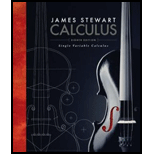
Single Variable Calculus
8th Edition
ISBN: 9781305266636
Author: James Stewart
Publisher: Cengage Learning
expand_more
expand_more
format_list_bulleted
Concept explainers
Textbook Question
Chapter 9.2, Problem 24E
- (a) Use Euler’s method with step size 0.2 to estimate y(0.6), where y(x) is the solution of the initial-value problem y′ = cos(x + y), y(0) = 0.
- (b) Repeat part (a) with step size 0.1.
Expert Solution & Answer
Trending nowThis is a popular solution!

Chapter 9 Solutions
Single Variable Calculus
Ch. 9.1 - Show that y=23ex+e2x is a solution of the...Ch. 9.1 - Verify that y = t cos t t is a solution of the...Ch. 9.1 - (a) For what values of r does the function y = erx...Ch. 9.1 - (a) For what values of k does the function y = cos...Ch. 9.1 - Which of the following functions are solutions of...Ch. 9.1 - Prob. 6ECh. 9.1 - (a) What can you say about a solution of the...Ch. 9.1 - (a) What can you say about the graph of a solution...Ch. 9.1 - A population is modeled by the differential...Ch. 9.1 - The Fitzhugh-Nagumo model for the electrical...
Ch. 9.1 - Prob. 11ECh. 9.1 - Prob. 12ECh. 9.1 - Prob. 13ECh. 9.1 - Suppose you have just poured a cup of freshly...Ch. 9.1 - Psychologists interested in learning theory study...Ch. 9.1 - Von Bertalanffys equation states that the rate of...Ch. 9.1 - Prob. 17ECh. 9.2 - A direction field for the differential equation y...Ch. 9.2 - A direction field for the differential equation...Ch. 9.2 - Match the differential equation with its direction...Ch. 9.2 - Match the differential equation with its direction...Ch. 9.2 - Match the differential equation with its direction...Ch. 9.2 - Prob. 6ECh. 9.2 - Prob. 7ECh. 9.2 - Prob. 8ECh. 9.2 - Prob. 9ECh. 9.2 - Sketch a direction field for the differential...Ch. 9.2 - Prob. 11ECh. 9.2 - Prob. 12ECh. 9.2 - Prob. 13ECh. 9.2 - Prob. 14ECh. 9.2 - Prob. 19ECh. 9.2 - Prob. 20ECh. 9.2 - Prob. 21ECh. 9.2 - Use Eulers method with step size 0.2 to estimate...Ch. 9.2 - Prob. 23ECh. 9.2 - (a) Use Eulers method with step size 0.2 to...Ch. 9.2 - The figure shows a circuit containing an...Ch. 9.3 - Solve the differential equation. 1. dydx=3x2y2Ch. 9.3 - Solve the differential equation. 2. dydx=xyCh. 9.3 - Prob. 3ECh. 9.3 - Solve the differential equation. 4. y + xey = 0Ch. 9.3 - Prob. 5ECh. 9.3 - Solve the differential equation. 6....Ch. 9.3 - Prob. 7ECh. 9.3 - Solve the differential equation. 8....Ch. 9.3 - Prob. 9ECh. 9.3 - Solve the differential equation. 10. dzdt+et+z=0Ch. 9.3 - Find the solution of the differential equation...Ch. 9.3 - Find the solution of the differential equation...Ch. 9.3 - Find the solution of the differential equation...Ch. 9.3 - Find the solution of the differential equation...Ch. 9.3 - Prob. 15ECh. 9.3 - Find the solution of the differential equation...Ch. 9.3 - Find the solution of the differential equation...Ch. 9.3 - Prob. 18ECh. 9.3 - Prob. 19ECh. 9.3 - Find the function f such that f(x) = xf(x) x and...Ch. 9.3 - Solve the differential equation y = x + y by...Ch. 9.3 - Solve the differential equation xy = y + xey/x by...Ch. 9.3 - (a) Solve the differential equationy=2x1y2. (b)...Ch. 9.3 - Solve the equation ey y + cos x = 0 and graph...Ch. 9.3 - Find the orthogonal trajectories of the family of...Ch. 9.3 - Find the orthogonal trajectories of the family of...Ch. 9.3 - Prob. 31ECh. 9.3 - Prob. 32ECh. 9.3 - Prob. 33ECh. 9.3 - Prob. 34ECh. 9.3 - An integral equation is an equation that contains...Ch. 9.3 - Prob. 36ECh. 9.3 - Prob. 37ECh. 9.3 - Prob. 38ECh. 9.3 - Prob. 39ECh. 9.3 - Prob. 40ECh. 9.3 - Prob. 41ECh. 9.3 - Prob. 42ECh. 9.3 - Prob. 43ECh. 9.3 - A certain small country has 10 billion in paper...Ch. 9.3 - A tank contains 1000 L of brine with 15 kg of...Ch. 9.3 - The air in a room with volume 180 m3 contains...Ch. 9.3 - A vat with 500 gallons of beer contains 4% alcohol...Ch. 9.3 - A tank contains 1000 L of pure water. Brine that...Ch. 9.3 - When a raindrop falls, it increases in size and so...Ch. 9.3 - Prob. 50ECh. 9.3 - Prob. 51ECh. 9.3 - A model for tumor growth is given by the Gompertz...Ch. 9.3 - Prob. 54ECh. 9.4 - A population grows according to the given logistic...Ch. 9.4 - A population grows according to the given logistic...Ch. 9.4 - The Pacific halibut fishery has been modeled by...Ch. 9.4 - Suppose a population P(t) satisfies...Ch. 9.4 - Prob. 7ECh. 9.4 - The table gives the number of yeast cells in a new...Ch. 9.4 - Prob. 9ECh. 9.4 - (a) Assume that the carrying capacity for the US...Ch. 9.4 - One model for the spread of a rumor is that the...Ch. 9.4 - Biologists stocked a lake with 400 fish and...Ch. 9.4 - Prob. 13ECh. 9.4 - Prob. 14ECh. 9.4 - Prob. 16ECh. 9.4 - Consider a population P = P(t) with constant...Ch. 9.4 - Let c be a positive number. A differential...Ch. 9.4 - Prob. 21ECh. 9.4 - Prob. 22ECh. 9.4 - Prob. 23ECh. 9.4 - Prob. 24ECh. 9.4 - Prob. 25ECh. 9.5 - Prob. 1ECh. 9.5 - Prob. 2ECh. 9.5 - Prob. 3ECh. 9.5 - Prob. 4ECh. 9.5 - Prob. 5ECh. 9.5 - Prob. 6ECh. 9.5 - Prob. 7ECh. 9.5 - Solve the differential equation. 8. 4x3y + x4y =...Ch. 9.5 - Prob. 9ECh. 9.5 - Prob. 10ECh. 9.5 - Prob. 11ECh. 9.5 - Prob. 12ECh. 9.5 - Prob. 13ECh. 9.5 - Prob. 14ECh. 9.5 - Prob. 15ECh. 9.5 - Prob. 16ECh. 9.5 - Prob. 17ECh. 9.5 - Prob. 18ECh. 9.5 - Prob. 19ECh. 9.5 - Prob. 20ECh. 9.5 - Prob. 21ECh. 9.5 - Prob. 22ECh. 9.5 - Prob. 23ECh. 9.5 - Prob. 24ECh. 9.5 - Prob. 25ECh. 9.5 - Solve the second-order equation xy + 2y = 12x2 by...Ch. 9.5 - Prob. 27ECh. 9.5 - Prob. 28ECh. 9.5 - The figure shows a circuit containing an...Ch. 9.5 - Prob. 30ECh. 9.5 - Prob. 31ECh. 9.5 - Two new workers were hired for an assembly line....Ch. 9.5 - Prob. 33ECh. 9.5 - Prob. 34ECh. 9.5 - Prob. 35ECh. 9.5 - Prob. 36ECh. 9.5 - Prob. 37ECh. 9.5 - To account for seasonal variation in the logistic...Ch. 9.6 - Prob. 1ECh. 9.6 - Prob. 2ECh. 9.6 - Prob. 3ECh. 9.6 - Prob. 4ECh. 9.6 - Prob. 5ECh. 9.6 - A phase trajectory is shown for populations of...Ch. 9.6 - Graphs of populations of two species are shown....Ch. 9.6 - Prob. 8ECh. 9.6 - Populations of aphids and ladybugs are modeled by...Ch. 9.6 - In Example 1 we used Lotka-Volterra equations to...Ch. 9 - (a) What is a differential equation? (b) What is...Ch. 9 - Prob. 2RCCCh. 9 - Prob. 3RCCCh. 9 - Prob. 4RCCCh. 9 - Prob. 5RCCCh. 9 - Prob. 6RCCCh. 9 - (a) Write a differential equation that expresses...Ch. 9 - Prob. 8RCCCh. 9 - Prob. 9RCCCh. 9 - Prob. 1RQCh. 9 - Determine whether the statement is true or false....Ch. 9 - Prob. 3RQCh. 9 - Prob. 4RQCh. 9 - Prob. 5RQCh. 9 - Prob. 6RQCh. 9 - Prob. 7RQCh. 9 - Prob. 1RECh. 9 - Prob. 2RECh. 9 - Prob. 3RECh. 9 - Prob. 4RECh. 9 - Prob. 5RECh. 9 - Prob. 6RECh. 9 - Prob. 7RECh. 9 - Prob. 8RECh. 9 - Prob. 9RECh. 9 - Solve the initial-value problem. 10. (1 + cos x)y...Ch. 9 - Prob. 11RECh. 9 - Prob. 12RECh. 9 - Prob. 13RECh. 9 - Find the orthogonal trajectories of the family of...Ch. 9 - Prob. 15RECh. 9 - (a) The population of the world was 6.1 billion in...Ch. 9 - Prob. 17RECh. 9 - Prob. 18RECh. 9 - Prob. 19RECh. 9 - Prob. 20RECh. 9 - Prob. 21RECh. 9 - Prob. 22RECh. 9 - Prob. 23RECh. 9 - Prob. 24RECh. 9 - Prob. 1PCh. 9 - Prob. 2PCh. 9 - Prob. 3PCh. 9 - Prob. 4PCh. 9 - Prob. 5PCh. 9 - A subtangent is a portion of the x-axis that lies...Ch. 9 - Prob. 7PCh. 9 - Prob. 8PCh. 9 - A dog sees a rabbit running in a straight line...Ch. 9 - Prob. 10PCh. 9 - Prob. 11PCh. 9 - Prob. 12PCh. 9 - Prob. 13PCh. 9 - Prob. 14PCh. 9 - Prob. 15P
Knowledge Booster
Learn more about
Need a deep-dive on the concept behind this application? Look no further. Learn more about this topic, calculus and related others by exploring similar questions and additional content below.Recommended textbooks for you
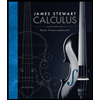 Calculus: Early TranscendentalsCalculusISBN:9781285741550Author:James StewartPublisher:Cengage Learning
Calculus: Early TranscendentalsCalculusISBN:9781285741550Author:James StewartPublisher:Cengage Learning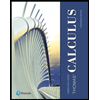 Thomas' Calculus (14th Edition)CalculusISBN:9780134438986Author:Joel R. Hass, Christopher E. Heil, Maurice D. WeirPublisher:PEARSON
Thomas' Calculus (14th Edition)CalculusISBN:9780134438986Author:Joel R. Hass, Christopher E. Heil, Maurice D. WeirPublisher:PEARSON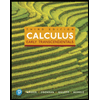 Calculus: Early Transcendentals (3rd Edition)CalculusISBN:9780134763644Author:William L. Briggs, Lyle Cochran, Bernard Gillett, Eric SchulzPublisher:PEARSON
Calculus: Early Transcendentals (3rd Edition)CalculusISBN:9780134763644Author:William L. Briggs, Lyle Cochran, Bernard Gillett, Eric SchulzPublisher:PEARSON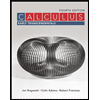 Calculus: Early TranscendentalsCalculusISBN:9781319050740Author:Jon Rogawski, Colin Adams, Robert FranzosaPublisher:W. H. Freeman
Calculus: Early TranscendentalsCalculusISBN:9781319050740Author:Jon Rogawski, Colin Adams, Robert FranzosaPublisher:W. H. Freeman
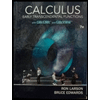 Calculus: Early Transcendental FunctionsCalculusISBN:9781337552516Author:Ron Larson, Bruce H. EdwardsPublisher:Cengage Learning
Calculus: Early Transcendental FunctionsCalculusISBN:9781337552516Author:Ron Larson, Bruce H. EdwardsPublisher:Cengage Learning

Calculus: Early Transcendentals
Calculus
ISBN:9781285741550
Author:James Stewart
Publisher:Cengage Learning

Thomas' Calculus (14th Edition)
Calculus
ISBN:9780134438986
Author:Joel R. Hass, Christopher E. Heil, Maurice D. Weir
Publisher:PEARSON

Calculus: Early Transcendentals (3rd Edition)
Calculus
ISBN:9780134763644
Author:William L. Briggs, Lyle Cochran, Bernard Gillett, Eric Schulz
Publisher:PEARSON

Calculus: Early Transcendentals
Calculus
ISBN:9781319050740
Author:Jon Rogawski, Colin Adams, Robert Franzosa
Publisher:W. H. Freeman


Calculus: Early Transcendental Functions
Calculus
ISBN:9781337552516
Author:Ron Larson, Bruce H. Edwards
Publisher:Cengage Learning
01 - What Is A Differential Equation in Calculus? Learn to Solve Ordinary Differential Equations.; Author: Math and Science;https://www.youtube.com/watch?v=K80YEHQpx9g;License: Standard YouTube License, CC-BY
Higher Order Differential Equation with constant coefficient (GATE) (Part 1) l GATE 2018; Author: GATE Lectures by Dishank;https://www.youtube.com/watch?v=ODxP7BbqAjA;License: Standard YouTube License, CC-BY
Solution of Differential Equations and Initial Value Problems; Author: Jefril Amboy;https://www.youtube.com/watch?v=Q68sk7XS-dc;License: Standard YouTube License, CC-BY